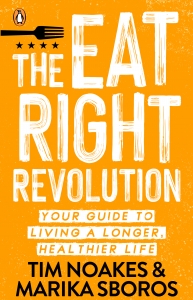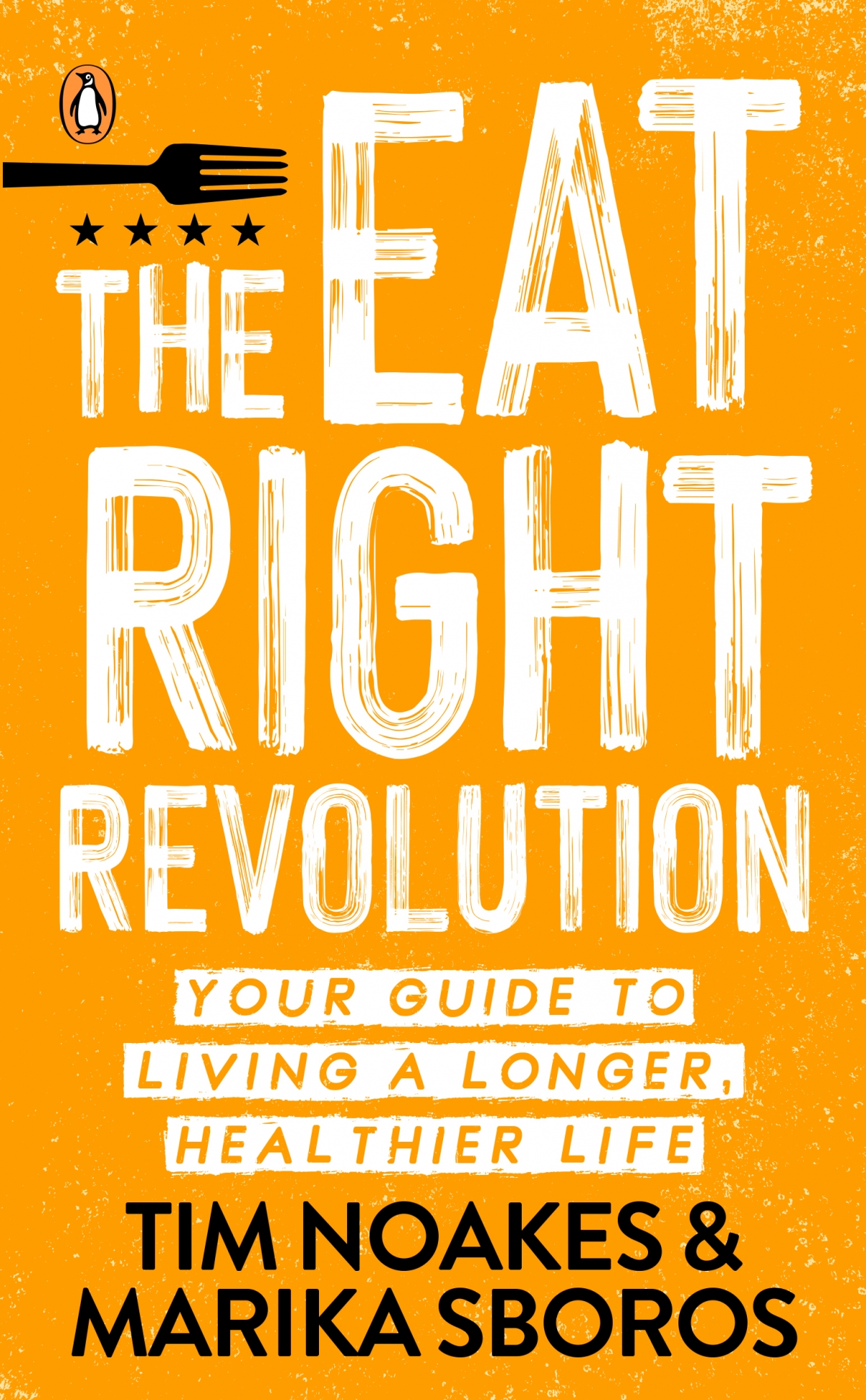
In the time of COVID-19, when the fatality rate for people with comorbidities like obesity and diabetes seems to be much higher when they contract the virus, Tim Noakes and Marika Sboros dispense invaluable dietary advice in their new book, The Eat Right Revolution.
Plus, try out their recipes for banting bread, seed crackers or peanut butter choc-chip cookies. Jump to recipes
“WHY SHOULD YOU READ THIS BOOK? There are many good reasons. We know that you are time-poor, like many others worldwide. And that you don’t have to dig too deeply to find books, blogs, articles, YouTube videos and websites on nutrition and low-carbohydrate, high-healthy-fat (LCHF) eating.
Information is thick on the ground, like weeds with tangled roots in and out of digital gardens. Trying to unravel it all can leave you confused.
That’s where Tim and I come in. We provide you with the knowledge to cultivate, harvest and enjoy LCHF’s many ‘fruits’ – or ‘meats’, in this case. We explain what LCHF is, and is not – that it’s a lifestyle, not a diet; it’s on a spectrum, and low-carb does not mean zero-carb. We also show that the ‘high’ in healthy fats of LCHF and ketogenic (very-low-carb, very-high-fat) eating is really just relative compared to conventional low-fat dietary ‘wisdom’.
“Evolution shows that LCHF is a perfectly normal, natural way of eating.”
You will understand why you don’t need to fear LCHF, its keto embodiment and nutritional ketosis. Evolution shows that LCHF is a perfectly normal, natural way of eating. It has stood the test of time – not just over thousands, but millions, of years. Ketosis is a perfectly normal natural state, into which even infants are born. (Babies also stay in ketosis throughout if they are exclusively breastfed.) All it means is that the very clever body uses fat instead of glucose as its preferred fuel source.
We know that any book on LCHF these days will likely extol its virtues for weight loss. Those virtues extend beyond obesity and weight loss to cover other chronic, life-threatening diseases. We cover those diseases, including obesity, type 2 diabetes (T2D), cardiovascular disease (CVD, heart attack and stroke) and many more.
We eviscerate conventional medical ‘wisdom’ that LCHF is ‘dangerous’ for hearts because it encourages a high intake of saturated fat that can clog and block your arteries. That is not scientific. It is fat phobia. Your arteries are not kitchen pipes.
“It makes sense to try lifestyle change first instead of drugs with serious side effects.”
We focus a lot on fat phobia in this book because it is alive and kicking, a killer in our time. Fat phobia is the result of ignorance and unproven scientific hypotheses, specifically the diet-heart hypothesis – that saturated fat causes heart disease – and its close cousin, the cholesterol or lipid hypothesis. Both are pillars on which official dietary guidelines firmly rest. We chisel away at those pillars and focus on the real issues of triglyceride (fats circulating in the blood), blood sugar (glucose) and, especially, the hormone insulin.
We show that rates of other serious illnesses, including respiratory conditions, neurological and dementia diseases (such as Alzheimer’s), and certain cancers are also rising. We cover non-alcoholic fatty liver disease (NAFLD) in depth. NAFLD rates are rising globally in adults and children. Many doctors – and dietitians – believe that saturated fat causes NAFLD. We show why they’ve got it hopelessly wrong.
We explain why all these illnesses fall under the medical umbrella of lifestyle diseases – diseases caused by bad lifestyle habits, of which diet is one of the most important. That’s good news, because if a disease is mostly caused by lifestyle, it makes sense to try lifestyle change first instead of drugs with serious side effects that can cut short your life.
“LCHF is looking good as a possible added protection method from the worst outcomes of COVID-19.”
It also means that these diseases are to some extent, therefore, a lifestyle ‘choice’. You can see that idea as either unnerving or liberating, depending on whether you believe in autonomy in dealing with your health. And whether you accept the responsibility – and right – to question everything that the so-called ‘experts’ tell you. Experts are human and fallible. They don’t have all the answers and they do make mistakes. Those mistakes can be fatal – not for them, but for you.
But perhaps one of the main reasons to read this book is to discover why it has taken a viral pandemic to breathe new life into the evidence for LCHF.
LCHF is looking good as a possible added protection method from the worst outcomes of COVID-19, as scientists have called the latest coronavirus pandemic. That’s not virtue-signalling for LCHF. It is scientific, based on evidence of the correlation between specific underlying conditions and the worst outcomes – severe suffering or death – from COVID-19 infection. We show how those common underlying conditions are precisely the diseases that LCHF can quickly and safely treat, reverse and prevent altogether.”
______________________________________________________________________________________________________________________________________________________
EVERYDAY BANTING RECIPES
Try these low-carb-friendly recipes taken from The Eat Right Revolution.
BANTING BREAD
3 tablespoons flaxseeds, plus extra for sprinkling
1½ cups sunflower seeds, plus extra for sprinkling
1 cup pecan dust, plus extra for sprinkling
1½ cups psyllium husk
2 teaspoons baking powder
1 teaspoon salt
Pinch of xylitol
250 ml buttermilk or plain yoghurt
6 eggs
Makes 1 loaf
1. Preheat the oven to 180 °C.
2. Grind the flax and sunflower seeds in a coffee grinder or blender until they form a coarse powder.
3. Mix all the dry ingredients together. Mix all the wet ingredients together. Add the dry ingredients to the wet ingredients and mix well.
4. Grease a loaf tin with butter and sprinkle with extra pecan dust.
5. Spoon the mixture into the tin and sprinkle with the extra seeds.
6. Bake for about 50 minutes, then remove from the oven and cool on a cooling rack before slicing.
7. This loaf can be pre-sliced and stored in the freezer.
SEED CRACKERS
½ cup flaxseeds
½ cup pumpkin seeds
⅓ cup almond flour
¼ cup chia seeds
⅓ cup sesame seeds
1 teaspoon salt
1 tablespoon psyllium husk
1¼ cups boiling water
Makes 30 crackers
1. Preheat the oven to 100 °C.
2. Grind the flaxseeds and pumpkin seeds separately using a food processor or coffee grinder until they resemble coarse sand.
3. Mix all the dry ingredients in a bowl.
4. Add the boiling water and mix together until it forms a gel-consistency ball of dough.
5. Place the dough on a baking tray lined with parchment paper. Place another sheet of paper on top and use a rolling pin to flatten the dough evenly to your desired thickness.
6. Use a knife to score the dough mixture into cracker-sized pieces.
7. Bake on the lower rack of the oven for 2–3 hours or until fully dehydrated, rotating the tray halfway through. Check occasionally as seeds are prone to burn quickly.
8. Remove from the oven and allow to cool.
9. Once dried and cool, break into pieces and store in an airtight container.
PEANUT BUTTER CHOC-CHIP COOKIES
2 large eggs
½ cup melted butter
2 tablespoons double-thick (whipping) cream
2 teaspoons vanilla extract
2 ½ cups almond flour
3 tablespoons peanut butter
¼ teaspoon salt
¼ cup sweetener (such as xylitol, erythritol or erythritol-stevia blend)
½ cup dark chocolate chips or small pieces of dark chocolate
Makes 9
1. Preheat the oven to 180 °C.
2. Whisk the eggs, butter, cream and vanilla together in a large bowl.
3. Add the almond flour, peanut butter, salt and sweetener. Stir until completely mixed.
4. Fold the chocolate chips into the cookie batter.
5. Roll small balls and place them on a greased baking tray. Flatten with a buttered fork, spatula or the bottom of a glass bowl.
6. Bake for 15–20 minutes until lightly golden.
Enjoy – guilt free!
______________________________________________________________________________________________________________________________________________________
 |
by Tim Noakes & Marika Sboros
|







